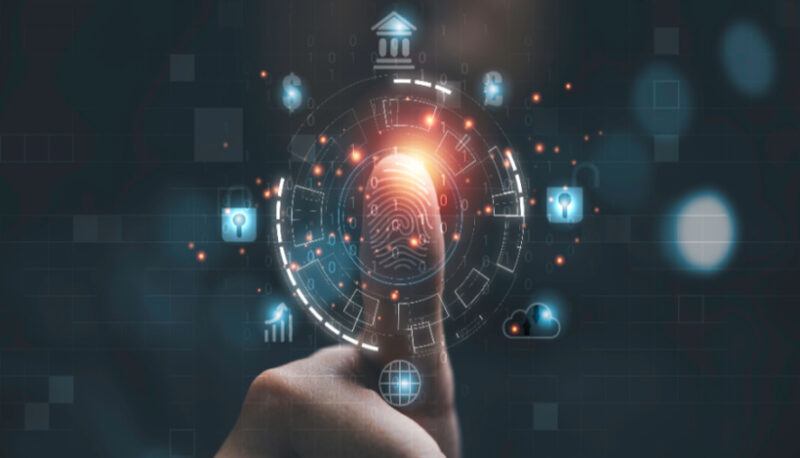
Biometrics in Retail
The retail industry is growing rapidly and therefore implementing various technologies. Technologies are being used to amplify work and to facilitate complexity in retail operations. Biometric technology is also one of the advanced technologies being implemented in retail. In this article, we’ll tell you about the use of biometric technology in retail.
What is Biometric Technology?
The technology based on recognizing verifiable biological data that is unique and specific to a particular individual is known as biometric technology. Biometrics is an advanced, secure identification and verification method that is increasingly used in various applications and markets.
How does it work?
Traditional biometric authentication uses the different biological or physiological characteristics of users to verify their identity. A biometric authentication solution stores the biometric data in a secure database and then compares the entered biometric factors to confirm the user’s legitimacy.
Previously, biometric authentication was the stuff of science fiction, portrayed in movies and on television as an advanced, expensive, and rather bulky technology to convey over-the-top security to the public. However, recent innovations in biometric technology enable companies and users to embrace this new development in identity management. And if you’re one of the audience reading this article on a mobile device, chances are you’ve used biometrics to unlock it, as it’s estimated that more than 400 million smartphones now offer biometric authentication.
What is retail?
In simple terms, the place where various commercial activities take place is known as retail. It offers consumers the opportunity to purchase goods and services from various types of retailers.
The black swan that happened two years ago – the global COVID-19 pandemic – resulted in the exponential growth of online retail. People started buying products online. This allowed retailers to implement advanced technologies in their operations. Biometric technology is one of those technologies.
Benefits of Biometric Technology in Retail
Usually, when people think of biometrics, they think of the use of purely physical factors, such as fingerprints, retinal scans, facial recognition and speech recognition. While all of these play a role, biometric authentication also encompasses new dimensions, such as behavioral aspects. This runs a continuous authentication bus, which ensures that users (who have passed the first login portal) type, act and otherwise behave according to the basic behavior. Users who fail to do so may be banned from further action until their identity can be verified by other means. The advantages of biometric technology can be divided into:
1. Convenience:
Biometric technology allows retailers to easily determine the right consumers from millions, or authenticate the right one in less than a second, because it is based on the use of unique physical properties. The advantage of this approach over text-based passwords becomes apparent almost immediately. No one can “forget” their biometrics like you could with your passwords, because people are usually attached to them.
2. Secure Transactions
Your company can also use the proliferation of mobile devices to its advantage. Companies with biometric authentication solutions can often sync with employees’ mobile devices, allowing them to undergo authentication. This can become a huge bonus for workflows and for remote workers, as it increases security and reduces the time at the login portal. Today’s method of password and pin authentication does not provide the required level of security for online transactions. Now with biometrics it is safer.
3. Privacy
Biometric technology can ensure that the privacy of a person’s data is not violated, as the data can only be accessed by the person who has been given permission. Biometrics cannot be guessed or cracked in the same way as passwords, nor can they be stolen as long as they are preserved.
4. Efficiency:
Biometric technology increases retail efficiency by making its transactions more accurate, reliable, productive and punctual. Biometrics can also simplify workflows by enabling faster logins and freeing your IT security team from constantly requesting passwords.
5. Authentication
Biometrics are often used as an important part of modern multi-factor authentication. Biometric authentication, in turn, takes advantage of the other layers of security in MFA, including geofencing, request time monitoring, and hard token.
6. Safe from hackers
The more layers of security there are between users and access, the harder it is for hackers to attempt to breach your network. While biometric authentication provides a stronger single-factor authentication method than passwords, relying on a single layer of security can put your business at risk. Biometric authentication should be an important cybersecurity consideration for any enterprise, but it should only serve as part of your overall identity management system.
Conclusion
In short, the amazing benefits of using biometric technology in retail will be the reason for implementing this cutting edge technology. Therefore, it can be assumed that 90% of the retail sector will use biometric technology in the future. Undoubtedly, retailers will benefit greatly from this. So if you are a retailer, consider implementing biometric technology in your business.
Read further:
Additional Resources:
Looking for the right LMS for retail training? Find, choose and compare learning management systems in eLearning Industry’s exclusive online directory.
